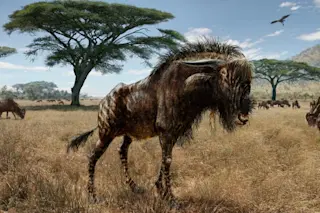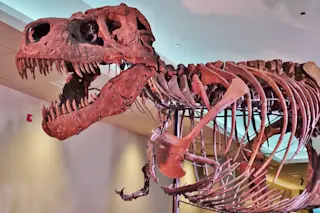An artist's interpretation of Rusingoryx atopocranion. (Credit: Todd S. Marshall) It seems unlikely that a shaggy-maned antelope from the Ice Age would have much in common with a group of dinosaurs that roamed during the Cretaceous period 145 to 66 million years ago. But, then again, science is perpetually full of surprises. Rusingoryx atopocranion, an extinct species related to the modern wildebeest, shares a bizarre adaptation with a group of hadrosaurs: a hollow, domed ridge of bone along the front of its face called a nasal crest. Paleontologists say that a Pleistocene antelope with a bony nasal crest like that of some hadrosaur species is a surprising example of what's called convergent evolution.
The bones that make up the front of Rusingoryx’s face – its nasal bones, premaxillae (the pair of small bones at the end of the upper jaw) and frontal bones – are all elongated and tilted upward ...














